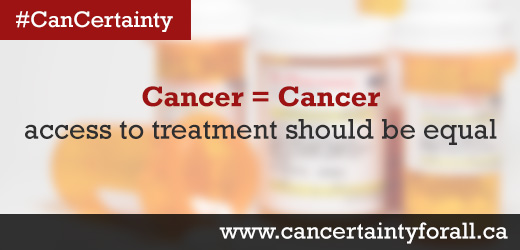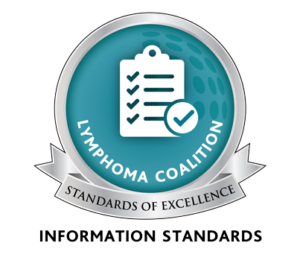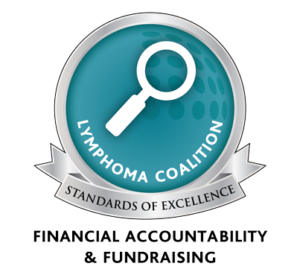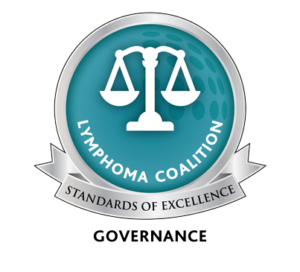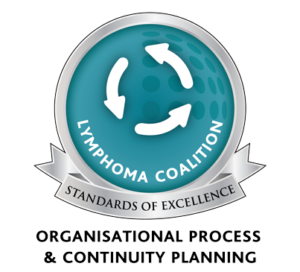The CanCertainty Coalition, a collaboration of 35 cancer patient groups, physicians and national healthcare charities founded one year ago to challenge inequities in cancer care and treatment, applauds Cancer Care Ontario (CCO)’s recent Report
CanCertainty Coalition Endorses Roadmap to Greater Access for Take-Home Cancer Therapies
Report from Cancer Care Ontario Seen as an Important Step Forward
Toronto, ON – The CanCertainty Coalition, a collaboration of 35 cancer patient groups, physicians and national healthcare charities founded one year ago to challenge inequities in cancer care and treatment, applauds Cancer Care Ontario (CCO)’s recent Report (Think Tank: Enhancing the Delivery of Take-Home Cancer Therapies in Ontario) highlighting challenges and disparities in Ontario’s cancer program. A glaring disparity featured in the Report is hospital-administered cancer therapies are publicly reimbursed, while take-home therapies are not.
The Report, stemming from a full-day policy planning session with leading Ontario cancer specialists, policy makers and representatives from cancer patient organizations, provides a roadmap to improve quality, safety, and access to take-home cancer therapies (such as an oral tablet or injectable) in Ontario. The CanCertainty Coalition welcomed the high-level multi-stakeholder policy meeting and fully endorses the content of the proceedings Report.
“One message is loud and clear: cancer treatments are changing and Ontario’s cancer system must change as well,” says Deb Maskens, kidney cancer patient, co-founder of both Kidney Cancer Canada and the CanCertainty Coalition. “Why should where patients receive their medication – in a hospital versus at-home – dictate whether medications are publicly paid for or not? It’s not acceptable for patients who require take-home medication to face delays and have to decide between finding the money or foregoing cancer treatment.”
Provinces other than Ontario and Atlantic Canada cover all cancer treatment, however and wherever administered, in a single integrated cancer system. Ontario and the Atlantic provinces have completely separate systems for in-hospital and at-home treatments. In Ontario, patients needing take-home medication receive partial coverage depending upon their age, private insurance status and income from their entire household. Process and paperwork can result in significant treatment delays and often in unaffordable out-of-pocket costs compared to hospital-administered intravenous (IV) treatment, which, when listed on provincial formularies, is fully funded for every patient regardless of age or income.
For David McMillan, learning his 22-year-old daughter had a brain tumour was just the beginning of a long and difficult journey made worse by the inequities he and his family encountered.
“When we walked down the hospital hallway to the pharmacy and were presented with a bill for $10,000 for just the first round of my daughter’s take-home medication, I was absolutely stunned,” says Mr. McMillan. “Unfortunately the bad news didn’t stop there. Just 14 months later my wife was diagnosed with breast cancer – but her experience in getting access to needed chemotherapy medication was much different. Same pharmacy, same hospital, same departments, but it was like being in a parallel universe. The fact is – my daughter’s cancer medication wasn’t covered because she could take it at home. My wife’s medication was covered simply because it needed to be infused at the hospital. Treating two cancer patients so differently seems unjust.”
While the Coalition sees the Report as a positive first step towards addressing key gaps in coverage for Ontario cancer patients, it is urging the Ontario government to demonstrate commitment to its ‘Patients-First’ approach, including faster access to the right care at home, by taking clear steps towards putting this Report into action. The Government of Ontario is a consistent leader when working on health care innovations as a member of the Council of the Federation’s Health Care Innovation Working Group. This is an opportunity to apply that commitment at home to ensure all cancer patients in Ontario can benefit from the most appropriate cancer treatment prescribed to them.
About the CCO Report
One of the key themes identified in the Report is that patients, providers and administrators want a system that is simpler and more comprehensive, in that the delivery of take-home cancer medications should be equivalent in quality to the existing model for hospital-administered drugs. Key highlights and next step recommendations from the Report include:
- Agreement on rationale for transformational change: “Ontario’s model for providing take-home therapies is difficult for patients and providers to navigate, and its multiple reimbursement programs lack integration and universality.”1
- Need for system transformation:
- “Patients should not have to apply to multiple reimbursement programs to obtain drug coverage.”2
- “Public drug coverage for take-home cancer medications should align with the funding model for hospital-administered drugs.”3
- Call for one integrated system: “A single administrator should be tasked with monitoring the accessibility, safety and overall quality of outpatient cancer medications.”4
- Regarding reimbursement: “Participants strongly supported equal access to cancer medications regardless of age, income, private insurance benefits, or place of administration. Public drug coverage for take-home cancer medications should align with the funding model for hospital-administered drugs… not patient socio-economic factors.”5
The report concluded: “Think tank participants made a compelling case that the benefits to patients and providers from system transformation deserve careful consideration.”6
The Road Ahead
“Today, more than one-third of cancer treatments are oral medications, but what’s more, 60 per cent of new cancer treatments under development are oral medications,” says Dr. Sandy Sedhev, Medical Oncologist at the William Osler Health Centre in Toronto. “An estimated two in five Canadians will get cancer in their lifetime. The move to at-home cancer treatment is an important one – it helps to support an over-crowded system where we’re trying to move people out of hospitals.”
“The CanCertainty Coalition recognizes Minister Hoskins as a leader in proposing universal Pharmacare at the national level,” says Ms. Maskens. “The Coalition hopes to see the same commitment right here at the provincial level to ensure universality for all cancer patients in Ontario. We see reform in Ontario’s cancer coverage model as a necessary stepping stone towards broader pan-Canadian agreements.”
About the CanCertainty Coalition
The CanCertainty Coalition is the united voice of 35 Canadian patient groups, cancer health charities, and caregiver organizations from across the country, joining together to significantly improve the affordability and accessibility of cancer treatment.
The Coalition is comprised of the following patient groups:
|
|
The campaign is also supported by the Physician Alliance for Cancer Care and Treatment (PACCT). The CanCertainty campaign is a project led by Kidney Cancer Canada. During National Kidney Month (March 2014), Kidney Cancer Canada raised awareness of the need for fair and equal access to cancer medications taken orally. Thirty-four other cancer patient organizations have joined the CanCertainty campaign and coalition to bring attention to this issue and work together towards a solution for all Canadian cancer patients. For more information, visit www.CanCertaintyForAll.ca.
– 30 –
For more information, please contact:
Dustin Hamilton / Jaclyn Crawford
Environics Communications
416-969-2664 / 416-969-2728
dhamilton@environicspr.com / jcrawford@environicspr.com
References:
1. Enhancing the Delivery of Take-Home Cancer Therapies in Canada. Cancer Care Ontario Proceedings Report. December 2014. P. 33.
2. Enhancing the Delivery of Take-Home Cancer Therapies in Canada. Cancer Care Ontario Proceedings Report. December 2014. P. 27
3. Enhancing the Delivery of Take-Home Cancer Therapies in Canada. Cancer Care Ontario Proceedings Report. December 2014. P. 29
4. Enhancing the Delivery of Take-Home Cancer Therapies in Canada. Cancer Care Ontario Proceedings Report. December 2014. P. 27
5. Enhancing the Delivery of Take-Home Cancer Therapies in Canada. Cancer Care Ontario Proceedings Report. December 2014. P. 29
6. Enhancing the Delivery of Take-Home Cancer Therapies in Canada. Cancer Care Ontario Proceedings Report. December 2014. P. 29

